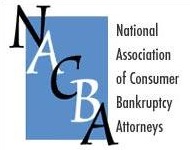 Our professional well being and the successful outcome of the client’s case may well depend on how well we, as attorneys, have done our due diligence. “I asked the client”, you say. Perhaps not good enough, say the cases.
Our professional well being and the successful outcome of the client’s case may well depend on how well we, as attorneys, have done our due diligence. “I asked the client”, you say. Perhaps not good enough, say the cases.
Well done bankruptcy schedules require a substantial amount of information, much of it interrelated. Part of the strategy of the drafters of BAPCPA was to scare off debtors and attorneys was increased complexity and a parade of horribles if they didn’t get it right.
The flip side of the practical problem is that bankruptcy work is generally done on narrow margins. In most consumer cases, there is neither time nor money to exhaustively validate the information the client gives you. How, then, do we proceed?
I attended a presentation last weekend by Fredrick Clement and Lorraine Crozier that offered the Withrow case as a guide. Withrow sets out a five step analysis that the court used to determine if the attorney had fulfilled his duty to exercise due diligence.
- Educate the debtor: did the attorney impress upon the debtor the critical importance of accuracy?
- Review of debtor’s documents: did the attorney request and review the documents available to the debtor that could verify the information provided?
- Verify with outside sources: did the attorney use external sources that are not time or cost prohibitive to double check?
- Analyze documents & schedules for inconsistency:was there anything that should have alerted the attorney that the debtor’s information could not be accurate?
- Correct inaccuracies promptly: did the attorney act to amend any inaccurate information in the filed documents?
The theme that runs through this list is the continuing, active processing of the information that you collect from the client. It’s not enough just to gather and publish the client’s information. The attorney who wants to keep his/her license to practice has to think about the information provided. Does the client understand what you need? Have you checked out those things for which there are online data bases? Does this make sense? Is today’s information consistent with the tax returns, or can you explain why it isn’t?
If this isn’t daunting enough, you can dip your toe in the article on best practices for debtor’s attorneys at 64 Bus. Law. 79 (2008).
Go forth and be skeptical.
Image courtesy of Oast House Archive and Geograph.








Thanks for sharing this and pointing out the best practices paper! Very helpful.
Good post, I’ve dl’d the best practices paper for bedtime reading. Your blog is one of the most useful out there for consumer attorneys that want to improve the quality of their product.